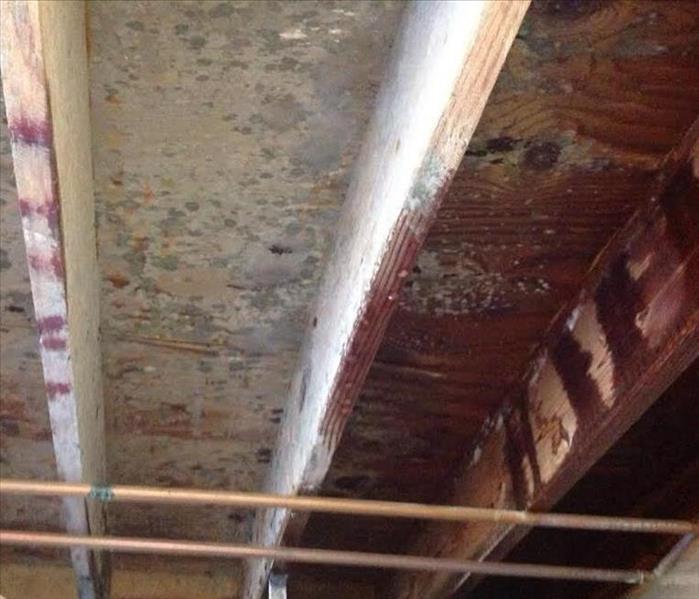Mold in Schools
4/9/2018 (Permalink)
Since SERVPRO of Birmingham South covers two large counties, we have quite a few school systems in the area. Because of the relationships we have formed with them, they are able to call us if they have any issues that their maintenance staff can not handle. They following information from https://www.epa.gov/ are reasons why you might find mold in schools and how to handle it. We get calls all the time for water and fire damages, but also for mold. If you suspect mold in your home, business or place of work - give us a call today!
Common Moisture Sources Found in Schools
Moisture problems in school buildings can be caused by a variety of conditions, including roof and plumbing leaks, condensation and excess humidity. Some moisture problems in schools have been linked to changes in building construction practices during the past twenty to thirty years. These changes have resulted in more tightly sealed buildings that may not allow moisture to escape easily. Moisture problems in schools are also associated with delayed maintenance or insufficient maintenance, due to budget and other constraints. Temporary structures in schools, such as trailers and portable classrooms, have frequently been associated with moisture and mold problems.
Suggestions for Reducing Mold Growth in Schools
Reduce Indoor Humidity
- Vent showers and other moisture-generating sources to the outside.
- Control humidity levels and dampness by using air conditioners and de-humidifiers.
- Provide adequate ventilation to maintain indoor humidity levels between 30-60%.
- Use exhaust fans whenever cooking, dishwashing and cleaning in food service areas.
Inspect the building for signs of mold, moisture, leaks or spills
- Check for moldy odors.
- Look for water stains or discoloration on the ceiling, walls, floors, and window sills.
- Look around and under sinks for standing water, water stains, or mold.
- Inspect bathrooms for standing water, water stains, or mold.
- Do not let water stand in air conditioning or refrigerator drip pans.
Respond promptly when you see signs of moisture and/or mold, or when leaks or spills occur
- Clean and dry any damp or wet building materials and furnishings within 24-48 hours of occurrence to prevent mold growth.
- Fix the source of the water problem or leak to prevent mold growth.
- Clean mold off hard surfaces with water and detergent, and dry completely.
- Absorbent materials such as ceiling tiles, that are moldy, may need to be replaced.
- Check the mechanical room and roof for unsanitary conditions, leaks, or spills.
Prevent moisture condensation
- Add insulation to reduce the potential for condensation on cold surfaces (i.e. windows, piping, exterior walls, room, or floors).
Floor and carpet cleaning
- Remove spots and stains immediately, using the flooring manufacturer’s recommended techniques.
- Use care to prevent excess moisture or cleaning residue accumulation and ensure that cleaned areas are dried quickly.
- Do not install carpeting in areas where there is a perpetual moisture problem (i.e., by drinking fountains, by classroom sinks, or on concrete floors with leaks or frequent condensation).






 24/7 Emergency Service
24/7 Emergency Service
